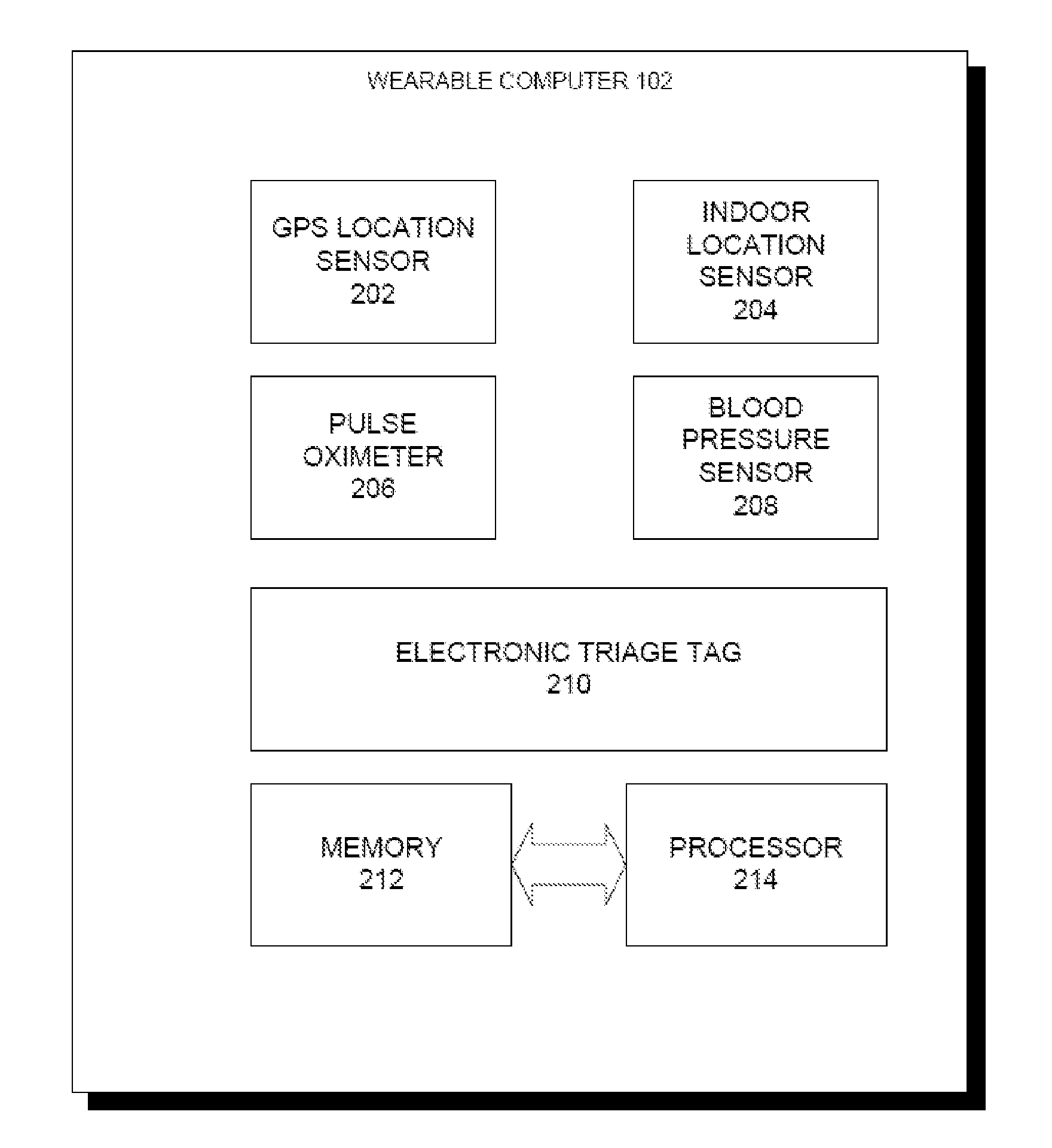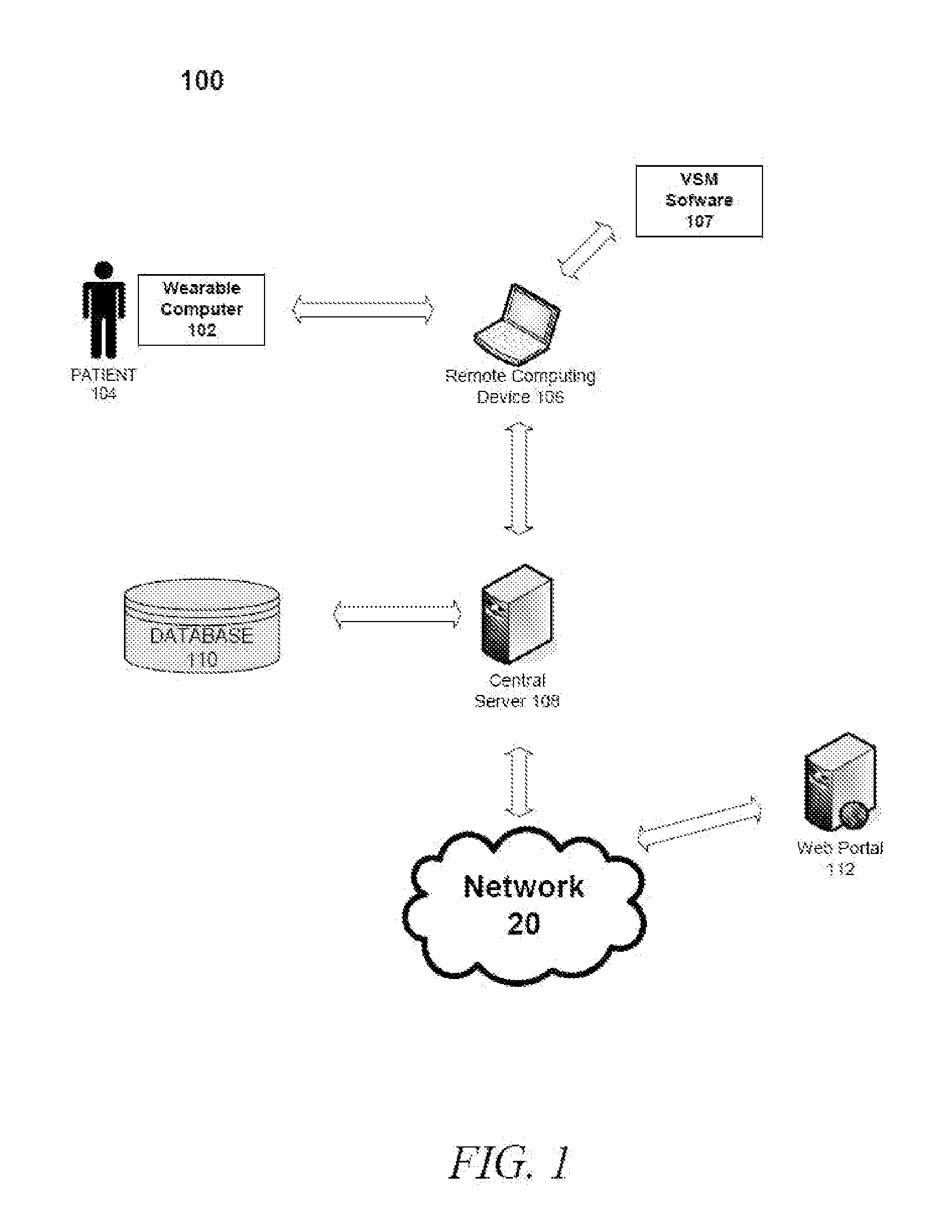Sensor-based Adaptive Wearable Devices and Methods
a wearable device and sensor technology, applied in the field of patient monitoring, can solve the problems of ineffective patient monitoring and positioning of paper triage tags, poor patient condition, and inability to accurately monitor and locate patients, and achieve the effect of accurate picture of patient health
- Summary
- Abstract
- Description
- Claims
- Application Information
AI Technical Summary
Benefits of technology
Problems solved by technology
Method used
Image
Examples
Embodiment Construction
[0002] This invention was made with Government support under National Library of Medicine contract N01-LM-3-3516. The Government has certain rights in the invention.
BACKGROUND OF THE INVENTION
[0003] 1. Field of the Invention
[0004] The present invention relates generally to patient monitoring and, more particularly, to systems, methods and apparatus for improved patient monitoring utilizing sensor-based adaptive wearable devices.
[0005] 2. Description of the Related Art
[0006] During a mass emergency, many injured people must be helped in a quick and efficient manner. A clever triage system proficiently chooses the order in which individuals are sent to the hospital. A valuable triage also defines an effective system that distributes limited medical resources in a manner that helps as many people as possible. At a disaster scene, it is critical that patients are correctly diagnosed, monitored, and located to ensure the preservation of the maximum number of lives. Unfortunately, the...
PUM
 Login to View More
Login to View More Abstract
Description
Claims
Application Information
 Login to View More
Login to View More - R&D
- Intellectual Property
- Life Sciences
- Materials
- Tech Scout
- Unparalleled Data Quality
- Higher Quality Content
- 60% Fewer Hallucinations
Browse by: Latest US Patents, China's latest patents, Technical Efficacy Thesaurus, Application Domain, Technology Topic, Popular Technical Reports.
© 2025 PatSnap. All rights reserved.Legal|Privacy policy|Modern Slavery Act Transparency Statement|Sitemap|About US| Contact US: help@patsnap.com



